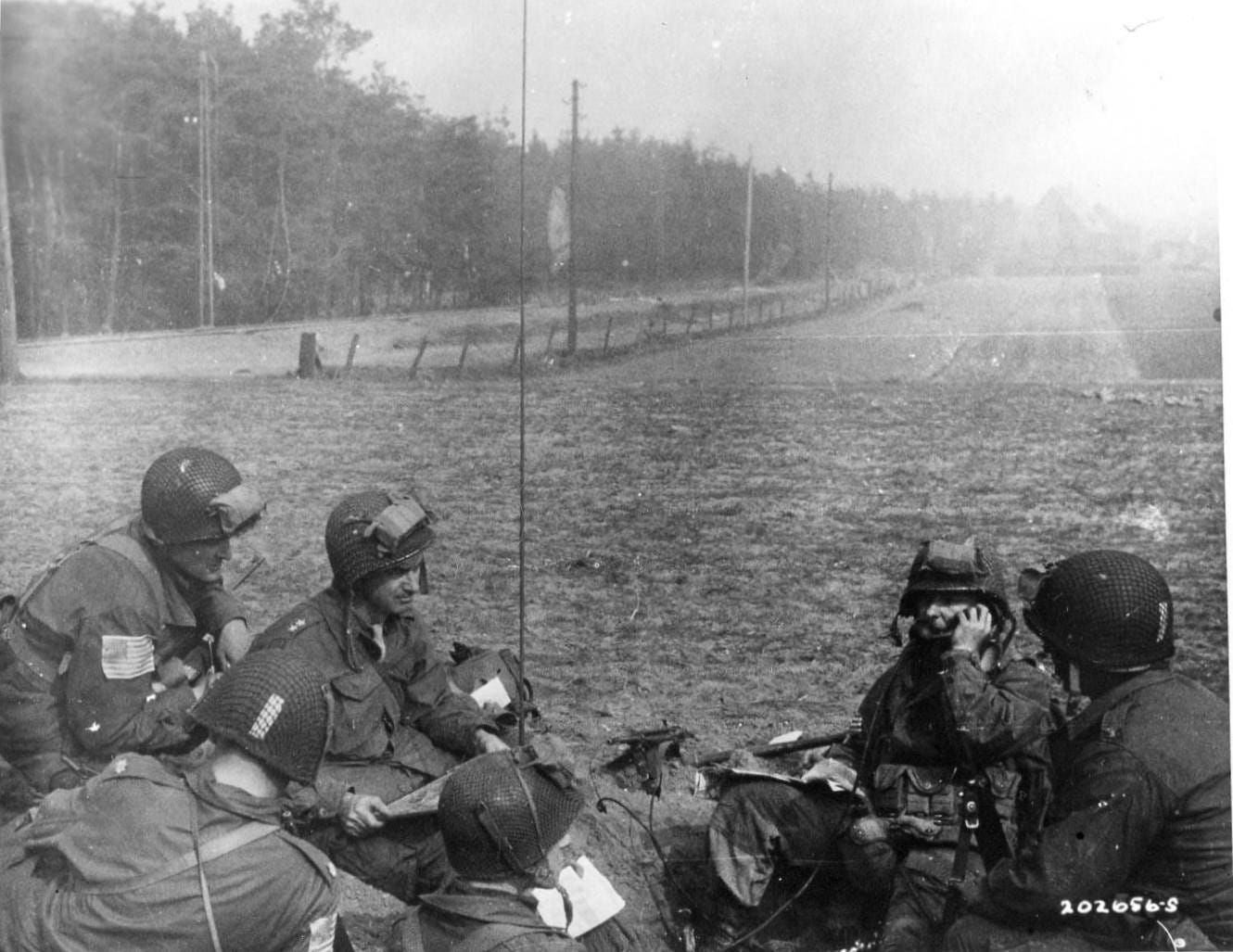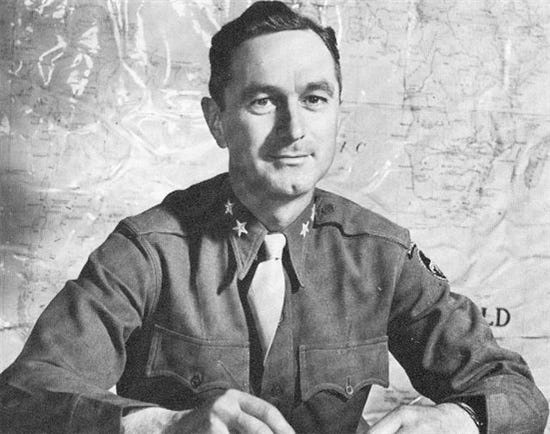Miley's Notes: Development of an Airborne General
"A Series on Theory" - Short Hits on Airborne Warfare
Tactics is an art, but technique is a trade. We develop a fire-control system, a plan of communications, a type of long-range gun, and we accompany these mechanical advancements with an appropriate technique; but at the same time the tactical and organizational factors remain unchanged…1
Brigadier General J.C. Breckinridge, USMC (1938)
Camp Forrest, Tennessee—July 15, 1944
Convened in Major General William “Bud” Miley’s private quarters were his four key staff officers. Training now complete, Miley and his officers were discussing the loose ends in the commanding general’s quarters. They knew overseas deployment was merely weeks away; and by extension—battle.
The first thing they outlined was something foundational from which all else flowed: “a definition of the likenesses and differences between ground units and airborne units.” In the winter bridging 1943 and 1944, Miley and his 17th Airborne Division played a key role in fleshing out those differences.
Out of the July 15 discussion, they delineated in terms of tactical employment and tactical principles.
Tactical employment they understood as armament, methods of supply and other such functions that made the division capable of fighting. Tactical principles were the act of fighting.
Early on, up until the invasion of Sicily, the employment of the airborne division had been treated the same as a ground unit. Sicily had proven that to be fallacy, as Miley’s mentor Matthew Ridgway learned.
Distilled down, General Miley and his four compatriots concluded that the airborne division differed in three area of employment: armament, equipment, and supply. But there was “no difference” in all other factors.
Likewise, there was no difference between the tactical principles. The contrast came only in the opening hours of an airborne assault. “The principle difference from the start of the operation,” it was written on the yellow typewriter sheet dressed with their notes, “is that airborne units are originally scattered and must assemble, during which time a great amount of initiative and aggressiveness is necessary for all units.”
These foundations laid, the remainder of their discussion was consumed by matters of organization and guns. A radical desire they discussed was the elimination of all the anti-tank guns (37mm) in the division. They desired to democratize anti-tank by providing bazookas for every unit, and make every part of the 17th responsible for their own protection.
Artillery was a key element they would have liked to have modified. They did not believe in the parachute field artillery. If General Miley could, he would have eliminated it in favor of another glider-borne battalion. Miley would have preferred the parachute artillery independently owned by a higher headquarters for attachment where it was specifically requested.
The three artillery battalions, they agreed, would operate with two in direct support of infantry formations, with one in “general support.” They were adamant, however, that all three would always be engaged.
The ideas discussed in General Miley’s quarters that July were ideas birthed out of a robust training regime that challenged the 17th Airborne Division—as a division. It was a benefit Ridgway lacked prior to combat. Miley’s ultimate product was a codified “standing operating procedure” issued just weeks later, on the eve of overseas deployment. It was almost paradoxical, coming from a commanding general who eschewed detailed, written orders in favor of verbal orders. His SOP explicitly stated “minimum numbers of written orders will be used.”
The solution to this paradox was found in the SOPs preamble: “The purpose… is to prescribe routine procedure for those features of operations that lend themselves to standardized procedures.” Therefore, the SOP is heavy on the “routine” tasks of how to displace, who constituted the “forward” and “rear” CP, communications methods, and the like. It was sparse on the subjects of tactics and fighting. In other words, it served to enable un-detailed, oral orders. For when those were issued, the SOP provided each officer a common sheet of understanding.2
General Miley’s SOP—Miley’s philosophy—carried the 17th Airborne Division through incredible successes on the battlefield of western Europe.

Next week on Ridgway’s Notebook:
“Unlocking ‘Ridgway’s Notebook’” will harmonize the last four weeks, and deliver the punchline!
The author is grateful to Dr. Bruce Gudmundsson for introducing him to the writings of Breckinridge.
This was emblematic of a broader trend in the pre-war education of US Army officers. The so-called “Marshallites” such as Ridgway and Miley advocated for situation-specific, creative solutions that uncover the “‘essentials’ of a given situation.” It was an alternative to the “scholasticism” taught by Ft. Leavenworth, which was founded on the principles of “finely-formatted field orders.” Read more:






"Minimum number of written orders will be issed"
Oh, one can only hope. Maybe not every platoon level operation requires a 3 hour op order...